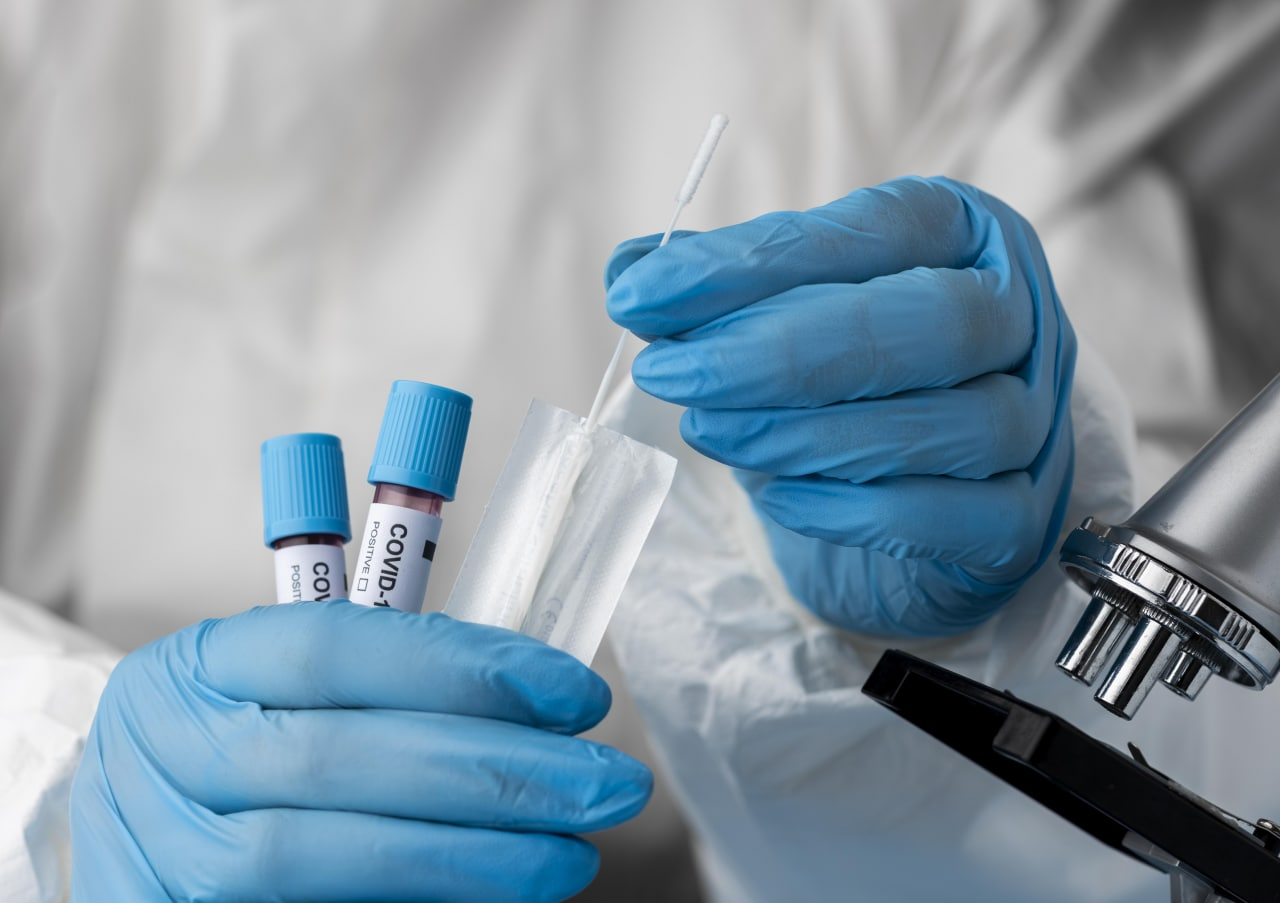Published by: Diana Luai Awad, Dr Pharmacist on Tuesday 29. November 2022
Tricyclic antidepressants (TCAs) have almost lost their importance as drugs for the treatment of depressive disorder, but still firmly occupy niches for other indications.

Mechanism of action of TCAs
TCAs act on approximately five different neurotransmitter pathways, resulting in a wide range of therapeutic effects.
- First of all, drugs of this group block the reuptake of serotonin and norepinephrine in presynaptic endings.
- This leads to an increase in the concentration of the corresponding mediators in the synaptic cleft. Apparently, it is the increase in the level of norepinephrine and serotonin in the synapse that contributes to the antidepressant effect of TCA1.
- In addition, TCAs act as competitive antagonists of postsynaptic alpha-cholinergic (alpha1- and alpha2-cholinergic), as well as muscarinic and histamine (H1) receptors. The affinity of drugs in each of these receptors is significantly affected by their structure.
The TCA molecule consists of three aromatic rings with an attached secondary or tertiary amine. The latter tend to block the reuptake of serotonin to a greater extent, while the secondary amines block the reuptake of epinephrine more. The combination of different amine structures and changes in chemical composition contributes to many of the side effects of TCAs. Today, TCAs are approved for the treatment of various diseases, depending on the composition. Consider the main indications for their use.
Indications for the use of TCAs
Major depressive disorder
The treatment regimen for major depressive disorder (MDD) includes amitriptyline, doxepin, nortriptyline, protriptyline, imipramine, trimipramine. However, it should be noted that in the treatment of MDD, these drugs show less activity than serotonin reuptake inhibitors (SSRIs) and also cause more serious side effects associated with anticholinergic activity and a lower overdose threshold. For these reasons, TCAs are generally not used as first-line therapy for MDD3.

Obsessive Compulsive Disorder
Clomipramine is approved for the treatment of obsessive-compulsive disorder in children over 10 years of age and adults. However, SSRIs, as well as SSRIs in combination with cognitive behavioral therapy, remain the first-line drug for this disease. The anti-obsessional effect of clomipramine can be attributed to its potent antiserotonin properties4,5. Due to the presence of a parenteral form, it is possible to achieve an effect in a short time. Often, intravenous administration is combined with oral administration of the drug, and after achieving a therapeutic effect (usually after 2 weeks), they switch completely to oral treatment. The drug is used for 4-6 months, in severe cases – much longer5.
Migraine Prevention
TCAs were the first drugs with proven effect in preventing headaches. They are still considered first-line drugs for the prevention of migraine attacks. TCA activity in patients with migraine is associated with the pathogenesis of the disease. It is known that the transmission of pain in the central nervous system is affected by a wide range of neurotransmitters, including norepinephrine, dopamine, serotonin. Like depression, migraine seems to be associated with a decrease in serotonin levels.
Tertiary amines, in particular amitriptyline, are considered more effective than secondary amines (eg, nortriptyline). Placebo-controlled studies have found that treatment with amitriptyline results in lower headache scores than placebo in patients with migraine as well as tension-type headache. On average, the severity of headache with prophylactic use of amitriptyline reduces by 33%6. For the prevention of migraine, amitriptyline is used at a dose of 10 to 100 mg per day, starting with minimal doses and gradually increasing to effective therapeutic doses, daily for up to six months.
Other TCAs are less active as migraine prophylaxis than amitriptyline. Their use is mainly based on clinical experience, although some positive results have been reported in small, uncontrolled studies for protriptyline, doxepin, imipramine7.
Insomnia
The sedative effect of TCAs allows them to be used as sleep inducing drugs. They may serve as an alternative to benzodiazepine receptor agonists when used at doses below the therapeutic doses used for depression. Unlike benzodiazepines, TCAs do not suppress deep sleep. Their sedative properties are associated primarily with the blockade of H1-histamine receptors8.
It is assumed that not all TCAs exhibit a sedative effect. To normalize sleep, doxepin, amitriptyline, trimipramine can be used. They become the drugs of choice for pain disorders associated with insomnia, as they also relieve pain8.
It should be noted that doxepin remains the only antidepressant approved for the treatment of insomnia. Its activity in primary chronic insomnia has been proven in controlled clinical trials. Their results showed that doxepin provided good post-waking status but had little effect on reducing the number of awakenings and improving the quality of sleep8.
Anxiety disorders
TCAs are indicated for anxiety disorder as second-line agents when SSRIs fail or are not possible due to side effects or unavailability9. TCAs are also used in panic disorder. However, their use is limited by side effects, in particular those associated with anticholinergic activity, as well as weight gain, daytime sedation, orthostatic hypotension. Among the best studied TCAs for panic disorder are imipramine and clomipramine. These drugs are effective for stopping panic attacks, improving the condition of phobias9.
Chronic pain
Antidepressants are approved by most clinical guidelines for the treatment of low back pain, as well as a number of guidelines for the management of patients with osteoarthritis. The mechanism of action of TCAs in chronic neuropathic pain (including myofascial pain, diabetic neuropathy, postherpetic neuralgia) is associated with impaired presynaptic reuptake of the biogenic amines of norepinephrine and serotonin in the descending inhibitory system and, as a result, an increase in the amount of these neurotransmitters in the synaptic cleft10. Other mechanisms may also play a role, in particular, blockade of N-methyl-D-aspartate receptors and ion channels11.
The effect of TCAs on neuropathic pain has been demonstrated in numerous randomized controlled trials. Drugs in this group improve the condition of one out of every 2-3 patients with peripheral neuropathic pain, while SSRIs – in one out of every 4-5 patients. TCAs work better than the anticonvulsant drug gabapentin, as well as analgesics such as tramadol and oxycodone11.
Fibromyalgia
A number of studies have confirmed that TCAs are more effective than placebo in the treatment of fibromyalgia, but the effect power of TCAs is low. TCAs for fibromyalgia are prescribed at doses lower than therapeutic doses for depression. They are combined with other therapies, including SSRIs. Presumably, the analgesic effect of TCAs in fibromyalgia is associated with the modulation of potassium channels and antagonism to NMDA receptors, as well as modulation of the level of monoamine neurotransmitters12.
Bedwetting
TCAs have strong anticholinergic properties and also exhibit additional central effects that may be useful in preventing urinary incontinence in a group of children who do not respond to first-line therapy. For this purpose imipramine is used for a course of no more than 3 months13.
Bibliography
- Moraczewski J., Aedma K. K. Tricyclic antidepressants //StatPearls [Internet]. StatPearls Publishing, 2022.
- Gillman PK. Tricyclic antidepressant pharmacology and therapeutic drug interactions updated // Br J Pharmacol. 2007 Jul;151(6):737-748.
- Vos C. F. et al. Tricyclic antidepressants for major depressive disorder: a comprehensive evaluation of current practice in the Netherlands //BMC psychiatry. 2021;21(1):1-11.
- Del Casale A, Sorice S, Padovano A, Simmaco M, Ferracuti S, Lamis DA, Rapinesi C, Sani G, Girardi P, Kotzalidis GD, Pompili M. Psychopharmacological Treatment of Obsessive-Compulsive Disorder (OCD). //Curr Neuropharmacol. 2019;17(8):710-736.
- Ananth J. Clomipramine in obsessive-compulsive disorder: a review //Psychosomatics.1983;24(8):723-727.
- Parsekyan D. Migraine prophylaxis in adult patients //Western Journal of Medicine.2000;173(5):341.
- Smitherman T. A. et al. The use of antidepressants for headache prophylaxis //CNS neuroscience & therapeutics.2011;17(5):462-469.
- Nazarian P. K., Park S. H. Antidepressant management of insomnia disorder in the absence of a mood disorder //Mental Health Clinician.2014;4(2):41-46.
- Zohar J., Westenberg H. G. M. Anxiety disorders: a review of tricyclic antidepressants and selective serotonin reuptake inhibitors //Acta Psychiatrica Scandinavica.2000;101:39-49.
- Ilmanita D., Hidayati H. B. Tricyclic Antidepressants in Chronic Low Back Pain: A Review //Аnalgesia.1998;21(23).
- Sindrup S. H. et al. Antidepressants in the treatment of neuropathic pain //Basic & clinical pharmacology & toxicology.2005;96(6):399-409.
- Lawson K. Tricyclic antidepressants and fibromyalgia: what is the mechanism of action? //Expert opinion on investigational drugs.2002;11(10):1437-1445.
- UK N. C. G. C. Nocturnal enuresis: The management of bedwetting in children and young people.2010.
Colleagues, haven't you joined our PharmaCourses of MENA region Telegram chats yet?
In the chats of more than 6,000 participants, you can always discuss breaking news and difficult situations in a pharmacy or clinic with your colleagues. Places in the chats are limited, hurry up to get there.
Telegram chat for pharmacists of MENA region: https://t.me/joinchat/V1F38sTkrGnz8qHe
Telegram chat fo physicians of MENA region: https://t.me/joinchat/v_RlWGJw7LBhNGY0






